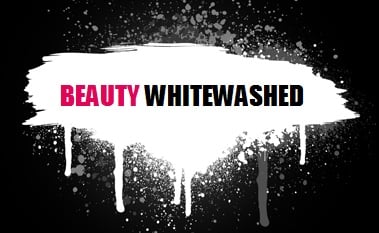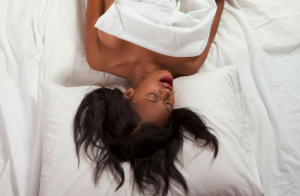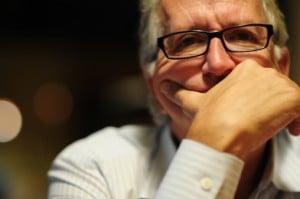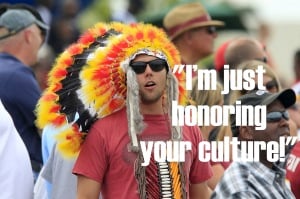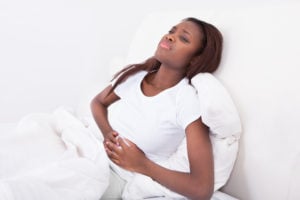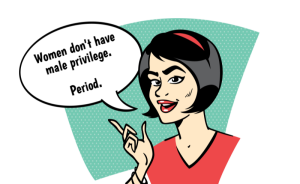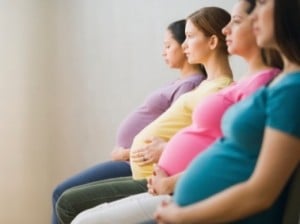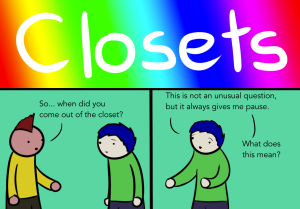Originally published on Beauty Redefined and cross-posted here with permission.
While we talk a lot about harmful media beauty ideals like extreme thinness, appearance-focused “fitness,” sex appeal,and photoshopping phoniness, one of the most oppressive ideals excludes anyone who isn’t … white. We call it the whitewashing of beauty.

Vanity Fair’s 2012 “Fresh Faces of Young Hollywood” features only white women on the cover … again. But they were nice enough to include two women of color (Paula Patton and Adepero Oduye) on the inside flap.
In a country where a full one-third of the population is black, Native American, Asian, Pacific Islander, Hispanic or Latina, the serious underrepresentation of women of color in media is really disturbing.
Further, when you only account for the women of color shown in positive roles or depictions – especially those depicted as beautiful or desirable – the number is almost negligible.
Since Beauty Redefined is focused on recognizing and rejecting harmful messages about bodies and beauty in media, we can’t pretend that race isn’t a major factor in the most harmful of beauty ideals.
Images of white women dominate all media – especially roles or depictions featuring “beautiful” or desirable women, not funny sidekicks, the chunky best friend, the hired help or other stereotypes.
To think this doesn’t have a negative effect on females who rarely see images of their own races depicted in a positive manner is insane.
To think it doesn’t have an effect on the way white people (and all people) view women of color is equally insane.

Vanity Fair’s “Fresh Faces of 2011″ all have one thing in common…
Since researchers have assumed that black girls were immune to the effects of thin-ideal media, communication scholar Kristen Harrison (2006) conducted a study aimed at testing this idea. Using survey data from 61 African American teen girls, she studied how TV exposure influenced the girls’ beliefs about others thought of the girls’ own bodies.
She discovered that for larger girls, TV exposure significantly influenced their belief that their peers thought they should be smaller. For the smaller girls, TV exposure significantly influenced the belief that their classmates expected them to be larger.
In other words, the larger girls in the group assumed their classmates thought they were too fat, while the smaller girls assumed their classmates thought they were too skinny.
Interestingly, Harrison found the same result three years earlier when she found white women’s exposure to TV beauty ideals predicted the large-busted women wanted smaller chests and small-busted women wanted larger chests.

Beyonce before and after Loreal’s digital manipulation.
Basically, that means for-profit beauty ideals in media are WORKING. Too many industries thrive off women feeling bad about themselves and seeking ways to fix their “flaws,” which women naturally perceive as a result of not measuring up to media standards for beautiful or even “average.”
These studies (along with plenty of others) show us that pretty much everyone feels bad. Too fat, too thin, too busty, not busty enough, too tall, too white, too dark …

Queen Latifah Over the Years
The mainstream beauty ideal is almost exclusively white, making it all the more unattainable for women of color. Though beautiful women of color like Beyonce, Jennifer Lopez, Queen Latifah, Rihanna, Jennifer Hudson, Halle Berry and others have achieved renown in U.S. culture, media representations of these women have become increasingly “anglicized” or “whitewashed” over time, with lighter-colored, straighter hair, lighter makeup, colored contacts and often shrinking figures.
Though many of these transformations are likely decided by the celebrities themselves or their styling teams, some of the transformations are much more sinister … and more digital.
Companies like Loreal and Clairol have come under fire for digitally lightening both the skin color and hair color of black women featured in their advertising, including Beyonce and Queen Latifah, as shown above.

Gabourey Sidibe Elle Magazine, Sept. 2010
Further, when we do see women of color represented as beauty icons in media, they almost always already fit white ideals –meaning they already have light skin tones, light-colored, straight hair, ideally “white” facial features, thin figures, etc.
The most famous examples of black or multiracial women celebrated for their beauty or desirability consistently fit those standards, and coming up with examples who don’t is really tough. Tyra Banks, Halle Berry, Rihanna, Gabrielle Union, Ciara, Zoe Saldana, Brandy, Janet Jackson, Alicia Keys … the list goes on.
Even when the women are being recognized for something other than their beauty, like, say, an Oscar nomination for incredibly talented actress Gabourey Sidibe of “Precious,” magazines like Elle still feel the need to whitewash her in order to feature her image on the cover.
While representation of women of color in media has increased slightly over the past decade, finding positive depictions of women with dark skin tones or natural hair is still nearly impossible in mainstream media.

Halle Berry

Tyra Banks
For both Latina and black women, research shows beauty ideals include more “feminine curves” than the dominant white ideal.
Instead of always subscribing to the thin ideal, girls and women of color, in some cases, value a “thick” ideal, comprising a slender but curvy body, with a thin waist, big breasts and hips and a round behind.
Essentially, “the feminine ideal is tanned, healthy slenderness, with no unsightly bumps, bulges, or cellulite, and bodily and facial perfection that results from hours of labor: exercise, makeup, and hair care” ‑ and 25 years later, plastic surgery and digital manipulation.

One recent example of this digital distortion to create (or make women fit) ideals is the notriously curvaceous actress Sofia Vergara (of the TV show “Modern Family”), whose arm was slimmed to the extreme for Pepsi’s “Skinny Can” campaign (barf).
Despite a controlling ideal that values “feminine curves” along with the thin ideal, this is still an objectified and unrealistic standard that is a nearly impossible combination for most women, unless extreme photoshopping or expensive and life-threatening cosmetic surgery is performed. Latina and Hispanic girls are still suffering under these controlling standards of beauty.

Jennifer Lopez 2011

Jennifer Lopez (bottom middle) in the mid-’90s as a “Fly Girl” on “In Living Color”
In studies where Latina teenage girls report greater body satisfaction compared to white girls, they still report comparable or higher rates of disordered eating.
Scary facts: Greater acculturation into mainstream U.S. culture has been associated with preference for much thinner body types among Mexican American women. Studies have found second-generation Mexican Americans had the highest levels of disordered eating among first- through fifth-generation Mexican Americans.
In other words, Latinas who are daughters of first-generation Americans were most likely to have an eating disorder, potentially as a result of trying to fit in with U.S. ideals, which may differ starkly from ideas about bodies found in their parents’ native cultures.
Further, Latina adolescents describe an ideal body type that looks extremely similar to the white norm AND they report the desire to lose weight at similar rates to their white peers.

Jennifer Hudson, cover of In Style, Aug. 2010

Jennifer Hudson on American Idol, 2004
Though many studies assume black females are more capable of resisting dangerous thin ideals than white females, plenty of evidence suggests that’s simply not true for too many.
Botta (2000) found that for both black and white girls, exposure to TV beauty ideals was associated with a stronger drive for thinness and greater body dissatisfaction. Roberts et al. (2004) echoed these findings, declaring that black girls may be particularly vulnerable to internalizing media messages that emphasize beauty and appearance.

Rhianna on the December 2011 cover of Vogue compared to her as a child
Others have found that the number of hours watching music videos increased the appearance and weight concerns of teen girls, with those findings being strongest among the black girls tested. Generally, television watching is related to lower self esteem and higher levels of disordered eating for girls and young women of all races and ethnicities.
We know different cultures may have different perceptions and definitions of beauty or even thinness, since Asian women considered to be of normal weight and figure in an Asian culture may be considered underweight or anorexic by Westerner ideas of body size.
But the central issue here is not so much cultural definitions of beauty or body size – it is the dangerous lengths some people will go in order to achieve those ideals.
Essentially, women are viewing a distorted reality and holding themselves to the unattainable standard set by the non-reality of popular media – and most often, those standards are based on oppressive, power-laden ideals of whiteness.

This is, in fact, Beyonce in a newly released photo for her latest record, “4.”
Recognizing the ridiculous lack of diversity in representation of media, and particularly when it comes to portrayals of beauty, is absolutely crucial for people of all races.
Recognizing is the first step toward rejecting those messages and the negative feelings they inspire about our bodies. After we reject them, we can continuously redefine beauty for ourselves – on our own terms – with the help of the beautiful people in our lives who recognize other forms of beauty as well.
For helpful reminders on postcards and sticky notes (and to support the work of Beauty Redefined), check out our uplifting messages here. For more strategies to help take back beauty, check out our list for girls and women and our list for boys and men.
[do_widget id=”text-101″]
Lindsay Kite co-founded The Beauty Redefined Foundation in 2009 with her twin sister, Lexie Kite, based on their master’s and Ph.D. research in Communications. She has a passion for helping women recognize and reject harmful messages about their bodies and what beauty means and looks like. Lindsay have been featured on Al Jazeera English TV, the Huffington Post, iVillage, KSL’s Studio 5, Fox13 News, KUTV2 News, the Deseret News, the Salt Lake Tribune, and many more.Search our 3000+ articles!
Read our articles about:
Our online racial justice training
Used by hundreds of universities, non-profits, and businesses.
Click to learn more


